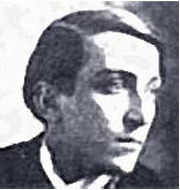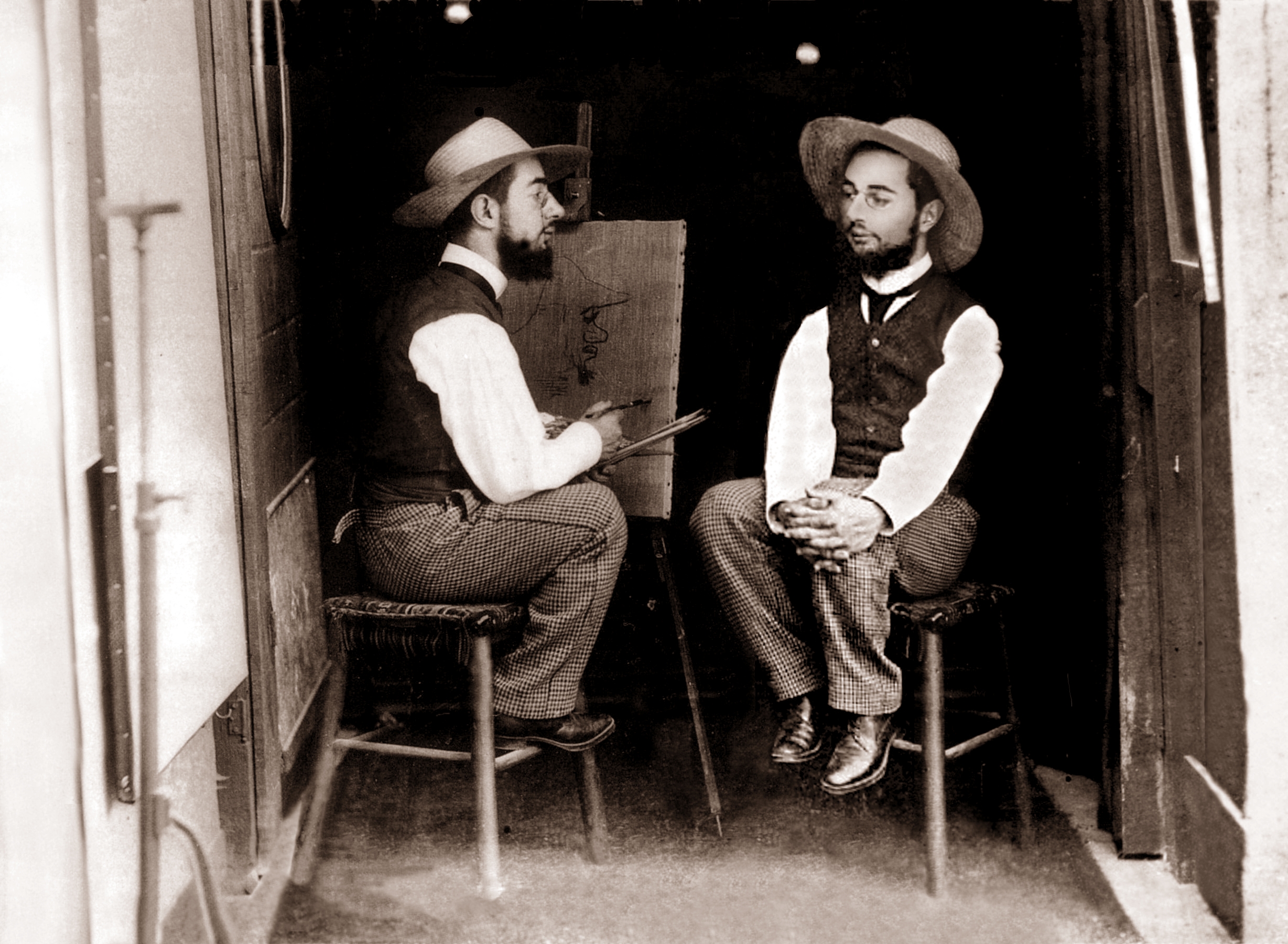|
Jules Chéret
Jules Chéret (31 May 1836 – 23 September 1932) was a French painter and lithographer who became a master of ''Belle Époque'' poster art. He has been called the father of the modern poster. Early life and career Born in Paris to a poor but creative family of artisans, Chéret had a very limited education. At age thirteen, he began a three-year apprenticeship with a lithographer and then his interest in painting led him to take an art course at the École Nationale de Dessin. Like most other fledgling artists, Chéret studied the techniques of various artists, past and present, by visiting Paris museums. From 1859 to 1866, he was trained in lithography in London, England, where he was strongly influenced by the British approach to poster design and printing. On returning to France, Chéret created vivid poster ads for the cabarets, music halls, and theaters such as the Eldorado, the Olympia, the Folies Bergère, Théâtre de l'Opéra, the Alcazar d'Été and the Mou ... [...More Info...] [...Related Items...] OR: [Wikipedia] [Google] [Baidu] |
Nice
Nice ( , ; Niçard: , classical norm, or , nonstandard, ; it, Nizza ; lij, Nissa; grc, Νίκαια; la, Nicaea) is the prefecture of the Alpes-Maritimes department in France. The Nice agglomeration extends far beyond the administrative city limits, with a population of nearly 1 millionDemographia: World Urban Areas , Demographia.com, April 2016 on an area of . Located on the , the southeastern coast of France on the Mediterranean Sea, at the foot of the [...More Info...] [...Related Items...] OR: [Wikipedia] [Google] [Baidu] |
Léon Choubrac
Léon Choubrac (17 November 1847 – 5 April 1885), who sometimes signed his drawings with Hope, Beraldi, ''Les graveurs du 19e siècle''p.14/ref> was a French poster designer and illustrator based in Paris. With his younger brother Alfred Choubrac, Léon was trained as a classical artist with the painters Charles Doërr and Isidore Pils at the École des Beaux Arts. The Choubrac brothers came very soon to the poster, practicing since 1875 the modern treatment of colors and typography, associated with images thanks to chromolithography. In the early 1870s, the Choubrac brothers and Jules Chéret (known as "the father of the modern poster") reduced the cost of colour lithography introducing technical advances. Additionally, in 1881 restrictions on bill-posting (''affichage'') were lifted and eased state control of the media in France.Verhagen, ''The poster in Fin-de-Siècle Paris''p. 107/ref>Carter, Karen L. (2010). Unfit for public display: female sexuality and the censorship of ... [...More Info...] [...Related Items...] OR: [Wikipedia] [Google] [Baidu] |
Edmond De Goncourt
Edmond Louis Antoine Huot de Goncourt (; 26 May 182216 July 1896) was a French writer, literary critic, art critic, book publisher and the founder of the Académie Goncourt. Biography Goncourt was born in Nancy. His parents, Marc-Pierre Huot de Goncourt and Annette-Cécile de Goncourt (née Guérin) were minor aristocrats who died when he and his brother Jules de Goncourt were young adults. His father was a former cavalry officer and squadron commander in the Grande Armée of Napoleon I, and his grandfather Jean-Antoine Huot de Goncourt had been a deputy in the National Assembly of 1789. Edmond attended the pension Goubaux, the Lycée Henri IV, and the Lycée Condorcet. At the Lycée Condorcet, he studied rhetoric and philosophy from 1840 to 1842, followed by the study of law between 1842 and 1844. After their mother's death in 1848, the brothers inherited an income which enabled them to live independently and pursue their artistic interests. Edmond was able to leave a treas ... [...More Info...] [...Related Items...] OR: [Wikipedia] [Google] [Baidu] |
Montmartre
Montmartre ( , ) is a large hill in Paris's northern 18th arrondissement. It is high and gives its name to the surrounding district, part of the Right Bank. The historic district established by the City of Paris in 1995 is bordered by Rue Caulaincourt and Rue Custine on the north, the Rue de Clignancourt on the east and the Boulevard de Clichy and Boulevard de Rochechouart to the south, containing . Montmartre is primarily known for its artistic history, the white-domed Basilica of the Sacré-Cœur on its summit, as well as a nightclub district. The other church on the hill, Saint Pierre de Montmartre, built in 1147, was the church of the prestigious Montmartre Abbey. On 15 August 1534, Saint Ignatius of Loyola, Saint Francis Xavier and five other companions bound themselves by vows in the Martyrium of Saint Denis, 11 Rue Yvonne Le Tac, the first step in the creation of the Jesuits. Near the end of the 19th century and at the beginning of the 20th, during the Belle Époq ... [...More Info...] [...Related Items...] OR: [Wikipedia] [Google] [Baidu] |
Cimetière Saint-Vincent
Saint-Vincent Cemetery (french: Cimetière Saint-Vincent) is a cemetery in the 18th arrondissement of Paris. History Saint-Vincent Cemetery was opened on January 5, 1831. It was Montmartres second cemetery, built after the Cimetière du Calvaire had been filled. Notable interments * Marcel Aymé (1902–1967), writer * Harry Baur (1880–1943), actor * Eugène Boudin (1824–1898) painter * Marcel Carné (1906–1996), film director * Jules Chéret (1836–1932), master poster designer * Jean-François Delmas (1861–1933), opera singer * Suzanne Grandais (1893–1920), actress * Roland Dorgelès (1885–1973), writer * Arthur Honegger (1892–1955), composer * Désiré-Émile Inghelbrecht (1880–1965), composer and orchestra leader * Gen Paul (1895–1975), painter * Claude Pinoteau (1925–2012), screenwriter and producer * Paul Sédir (Yvon Le Loup), (1871–1926), writer, philosopher * Théophile Steinlen (1859–1923) painter * Maurice Utrillo (1883–1955), painter * ... [...More Info...] [...Related Items...] OR: [Wikipedia] [Google] [Baidu] |
French Riviera
The French Riviera (known in French as the ; oc, Còsta d'Azur ; literal translation "Azure Coast") is the Mediterranean coastline of the southeast corner of France. There is no official boundary, but it is usually considered to extend from Toulon, Le Lavandou or Saint-Tropez in the west to Menton at the France–Italy border in the east."Côte d'Azur, côte méditerranéenne française entre Cassis et Menton" ("Côte d'Azur, French Mediterranean coast between Cassis and Toulon") in ''Dictionnaire Hachette encyclopédique'' (2000), p. 448."Côte d'Azur, Partie orientale du littoral français, sur la Méditerranée, de Cassis à Menton" ("Côte d'Azur, Eastern part of the French coast, on the Mediterranean, from Cassis to Menton"), in ''Le Petit Larousse illustré'' (2005), p. 1297. The coast is entirely within the Provence-Alpes-Côte d'Azur region of France. The Principality of Monaco is a semi-enclave within the region, surrounded on three sides by France and frontin ... [...More Info...] [...Related Items...] OR: [Wikipedia] [Google] [Baidu] |
Georges De Feure
Georges de Feure (real name Georges Joseph van Sluijters, 6 September 1868 – 26 November 1943) was a French painter, theatrical designer, and industrial art designer in the symbolism and Art Nouveau styles. De Feure was born in Paris. His father was an affluent Dutch architect, and his mother was Belgian. De Feure had two sons, Jean Corneille and Pierre Louis, in the early 1890s with his mistress Pauline Domec and a daughter with his first wife Marguerite Guibert (married 7 July 1897). In 1886, de Feure was one of the eleven students admitted at the Rijkscademie voor Beeldende Kunsten in Amsterdam, which he did however leave very quickly for Paris since he felt that formal academic training had nothing to offer him. Being of very independent nature, de Feure never again took up formal artistic studies, and forged his own independent path. He was however influenced by Jules Chéret in his posters for the café concert but most likely was never his pupil and became the key de ... [...More Info...] [...Related Items...] OR: [Wikipedia] [Google] [Baidu] |
Henri De Toulouse-Lautrec
Comte Henri Marie Raymond de Toulouse-Lautrec-Monfa (24 November 1864 – 9 September 1901) was a French painter, printmaker, draughtsman, caricaturist and illustrator whose immersion in the colourful and theatrical life of Paris in the late 19th century allowed him to produce a collection of enticing, elegant, and provocative images of the sometimes decadent affairs of those times. Born into the aristocracy, Toulouse-Lautrec broke both his legs around the time of his adolescence and, due to the rare condition Pycnodysostosis, was very short as an adult due to his undersized legs. In addition to his alcoholism, he developed an affinity for brothels and prostitutes that directed the subject matter for many of his works recording many details of the late-19th-century bohemian lifestyle in Paris. Toulouse-Lautrec is among the painters described as being Post-Impressionists, with Paul Cézanne, Vincent van Gogh, Paul Gauguin, and Georges Seurat also commonly considered ... [...More Info...] [...Related Items...] OR: [Wikipedia] [Google] [Baidu] |
Charles Gesmar
Charles is a masculine given name predominantly found in English and French speaking countries. It is from the French form ''Charles'' of the Proto-Germanic name (in runic alphabet) or ''*karilaz'' (in Latin alphabet), whose meaning was "free man". The Old English descendant of this word was '' Ċearl'' or ''Ċeorl'', as the name of King Cearl of Mercia, that disappeared after the Norman conquest of England. The name was notably borne by Charlemagne (Charles the Great), and was at the time Latinized as ''Karolus'' (as in ''Vita Karoli Magni''), later also as '' Carolus''. Some Germanic languages, for example Dutch and German, have retained the word in two separate senses. In the particular case of Dutch, ''Karel'' refers to the given name, whereas the noun ''kerel'' means "a bloke, fellow, man". Etymology The name's etymology is a Common Germanic noun ''*karilaz'' meaning "free man", which survives in English as churl (< Old English ''ċeorl''), which developed its depr ... [...More Info...] [...Related Items...] OR: [Wikipedia] [Google] [Baidu] |
Antoine Watteau
Jean-Antoine Watteau (, , ; baptised October 10, 1684died July 18, 1721) Alsavailablevia Oxford Art Online (subscription needed). was a French painter and draughtsman whose brief career spurred the revival of interest in colour and movement, as seen in the tradition of Correggio and Rubens. He revitalized the waning Baroque style, shifting it to the less severe, more naturalistic, less formally classical, Rococo. Watteau is credited with inventing the genre of '' fêtes galantes'', scenes of bucolic and idyllic charm, suffused with a theatrical air. Some of his best known subjects were drawn from the world of Italian comedy and ballet. Early life and training Jean-Antoine Watteau was born in October 1684 in Valenciennes, once an important town in the County of Hainaut which became sequently part of the Burgundian and Habsburg Netherlands until its secession to France following the Franco-Dutch War. He was the second of four sons born to Jean-Philippe Watteau (1660–1720) a ... [...More Info...] [...Related Items...] OR: [Wikipedia] [Google] [Baidu] |
Jean-Honoré Fragonard
Jean-Honoré Fragonard (; 5 April 1732 (birth/baptism certificate) – 22 August 1806) was a French painter and printmaker whose late Rococo manner was distinguished by remarkable facility, exuberance, and hedonism. One of the most prolific artists active in the last decades of the Ancien Régime, Fragonard produced more than 550 paintings (not counting drawings and etchings), of which only five are dated. Among his most popular works are genre paintings conveying an atmosphere of intimacy and veiled eroticism. Biography Jean-Honoré Fragonard was born at Grasse, Alpes-Maritimes, the son of François Fragonard, a glover, and Françoise Petit. Fragonard was articled to a Paris notary when his father's circumstances became strained through unsuccessful speculations, but showed such talent and inclination for art that he was taken at the age of eighteen to François Boucher. Boucher recognized the youth's rare gifts but, disinclined to waste his time with one so inexperienced ... [...More Info...] [...Related Items...] OR: [Wikipedia] [Google] [Baidu] |
.jpg)






